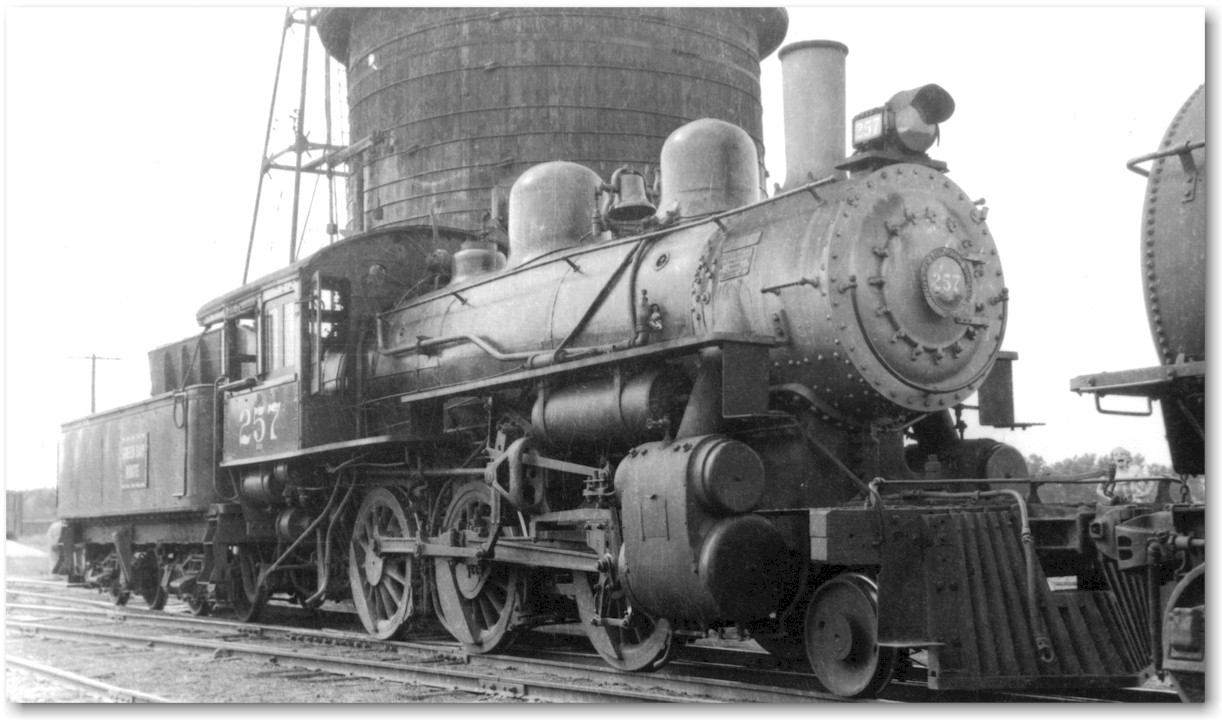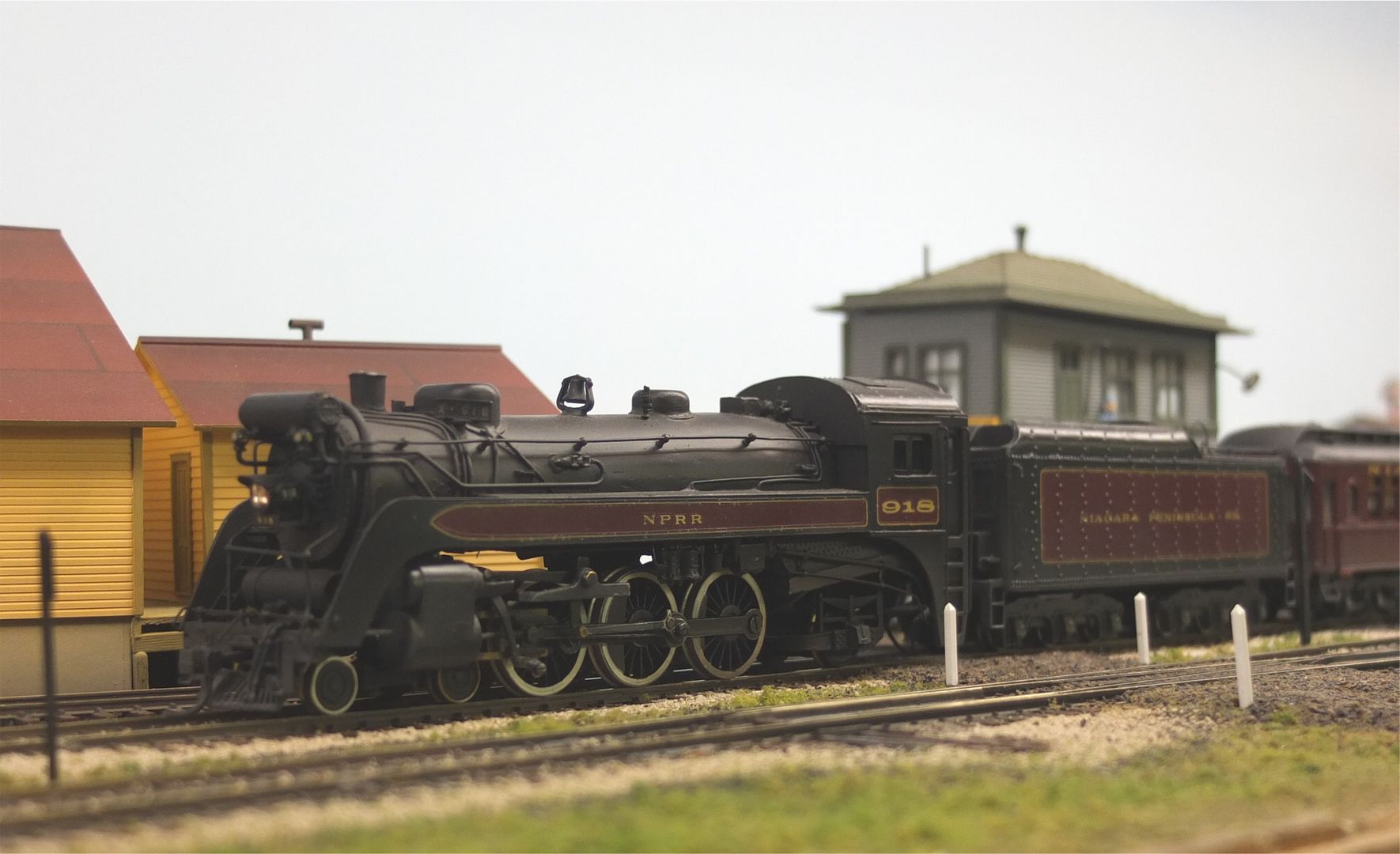I have been running their 2-6-0 and like it and wonder about those two ? I have a layout with 18" radius curves and #4 switches, all Shinohara if that matters.
I have the 2-8-2 Mikado and a GG1. I am very happy with both engines.
The decoders don’t support the Vstart CV, so they do exhibit jackrabbit starts when not under load. I found that reducing the Vmax CV changed the starting acceleration and made the engines smoother performers. I never run high speed trains anyway, so nothing was lost.
What is Vstart CV. The 2-6-0 I have starts out at a crawl, no jack rabit starts at all, at least on DCC.
Vstart is CV2. It is the minimum voltage applied to the motor when going from speed step 0 to 1.
There is also Vmax (CV5)(voltage on motor at top speed) and Vmidpoint (CV6).
Im still curious what exact kind of capabilities those Bachmann DCC sound value engines have. I dont have an engine equipped with it, I heard its not really good.
But as long as you’re satisfied with the detail and performance and sound from them, the 2-8-2 and 4-6-2 are made with equal quality, and shouldn’t dissappoint.
Of all the manufacturers who have made a non-brass HO USRA 2-8-2 (BLI,MTH,Oriental powerhouse,Trix/Marklin,Athearn Genesis, Bachmann,IHC,Rivarossi/AHM), Bachmann’s detail is comparable to Athearn Genesis’s mikados/pacifics in terms of detail. With IHC, rivarossi/ahm having less, and BLI,MTH,Trix, etc having more.
Charles
The detailing on the 2-6-0 is pretty decent, yes they are not as detailed as some but I fiqured I am mainly paying for the electronics. The speed control is as good as the most expencive engine I have. The motor noise is higher but not bad. The sound is great though the more expencive engines are more relistic sound wise but I only paid $99 for them. Word of warning though, they do need to run awhile and you do need to check that the wires are bin the right place (first one was perfect out of box, second one had drawbar bent wrong way and a couple wires were in wrong place on as far as placement on the wrong side of drawbar, took all of 5 sec. to fix both but it also took a few runs around the layout to achive the same smothness as other out of box.
I was actually about to get the 2-6-0 for myself, theyre really cheap these days. Figured it would be a nice start for kitbashing, and possibly creating a freelanced model like DocterWaynes.
But something about them always looked wrong, and that bothered me.
Turns out its the fact that the headlight is way too small(easy fix), and the fact that the boiler lacks boiler bands. Its so smooth.
It could be fixed, but I cant see myself adding boiler bands to an engine. That stuff requires far more precision than my hands could offer!

Charles
My layout is basically flat. Still, the Bachmann Mikado struggles with some short trains of a dozen cars or so. It doesn’t have traction tires and is not a heavy engine. It really helped when I replaced my old plastic wheels with metal wheelsets.
I never cared for the appearance of headlights atop the smokebox, and wouldn’t use them unless I were attempting to model a prototype which used them.
There are plenty of headlight styles and mounting brackets available from Cal-Scale (Bowser) and PSC.
As for the boiler bands, they could be quite easily added using either strip styrene or brass bar of suitable width and thickness.
If the model has moulded-on piping, you may wish to remove it before adding the bands, then replace the piping with three-dimensional ones bent from wire.
To properly align the bands and keep them parallel to one another, use dividers, with one leg of them against the front face of the cab, and the other at each point where a band is needed. Simply keep the one leg against the cab as you drag the dividers up and over the boiler, lightly scribing a line to which you can position each boiler band.
This Bowser Pacific has no cast-on boiler bands, but it will be getting a complete makeover, with the cab and all boiler details removed and replaced, as necessary, to represent a specific prototype…

I’d cut the bands somewhat longer than needed, then, after carefully positioning the end of each band into position, cement that end in-place (make sure that the rest of its length is aligned with the scribed marking).
You can then position the free end of the band on the marked line and cut-off most of the length that’s obviously too long. For the rest of the excess, cut it off in increasingly smaller increments, until it fits perfectly, then with the band still properly aligned and tight to the boiler, cement that end in place.&
Are you talking about their recent USRA Mikado, or the old Chinese prototype one Bachmann used to make?
I got mine when they first started marketing the Sound Value models. I like the detailing on the engine. My only issues are mediocre pulling power and the somewhat crippled sound decoders, both of which have workarounds. I don’t know where these models came out with respect to old Chinese models and newer USRA models.
Charles, as the owner of two BLI USRA heavy Mikados, and a Genesis Mikado, and someone who is familiar with all these models, the BLI model is not very impressive detail wise.
The BLI Mikados and Pacifics are completely generic, with out even the most basic road specific detail changes.
At least Bachmann was able to vary headlights, trailing trucks and tenders to match or be close to correct for the various road names offered.
Both locos have some cast in place details, and lack other fine details.
While I have not done so yet, I am potentially interested in adding several Bachmann Mikados to my fleet.
Understand, I am not unhappy
I think most here are talking about recent sound and value USRA Mikado.
Sheldon
Fair, both have a lot of molded on details, but personally I prefer BLI’s more than bachmanns. Bachmann pipes are very clearly molded on, and lacks depth, whereas BLI’s has a little more depth, and needs a bit closer inspection to notice that its not.
BLI also doesnt have prototype specific detail. That could be taken as a downside, but I just think of it as them modeling them as-delievered.
BLI’s mikados have about as much detail as their M1s, which isnt much.
No a side note, BLI’s mech has bearings, sprung drivers, and the works. Bachmanns I presume, dont, like all their other steam.*
Charles
*Bachmann non spectrum or non ex-spectrum steam.
Sprung drivers are only useful with bad trackwork, bearings not as valuable as they used to be because of improved manufacture. BLI are $100 more plus the only engine in DCC I have trubble with is a BLI (diesel).
I respectfully disagree. Although the springs BLI uses are a bit stiff, bearings & springs abolutely make engine mechanisms last longer, and run smoother.
Not to promote buying used, but I paid $90 for a BLI light mik, and $65 for a BLI heavy mike.
But yes, if $$$ is an issue, Bachmann’s are not bad by any means.
Charles, be careful using words like “all”. There have been Bachmann steam locos with partially sprung driver suspensions, the USRA Heavy 4-8-2 for one,
I put a high importance on those extra prototype details like correct B&O headlight positions, Delta trailing trucks, etc.
Sheldon
I agree, the prototype details is anice touch. Southern versions also have the special southern tender.
I meant all by all bachmann non spectrum engines.
Most of their spectrum engines have certain wheels sprung, like their mountain, the 2-8-0, and their 2-10-0. (atleast those are the ones I own). afaik, the fact that only some are sprung makes me believe that it was more for increasing traction, than it is for creating suspension on the mech.
I’ll edit my above post.
The first HO Bachmann 2-8-2 was a fairly small engine, based on a real Chinese built engine that had been sent to the US to work as a fantrip engine. That model came out maybe 10 years ago. Bachmann’s USRA 2-8-2 only came out about a year ago; it’s bigger than the old Chinese engine.
Chinese 2-8-2
https://estore.bachmanntrains.com/index.php?main_page=index&cPath=68_201&zenid=ghgdlqv84t166r2cen96lvrir1
The older one seems a lot more detailed… it’s unfortunate that the most recent version did not keep up to that standard.
Simon
The old model was a spectrum line. The new one is their standard line. It makes sense that the old one was more detailed.
The old one was also very obscure. I remember looking through my free bachmann catalogs back then, wonder what that engine was.